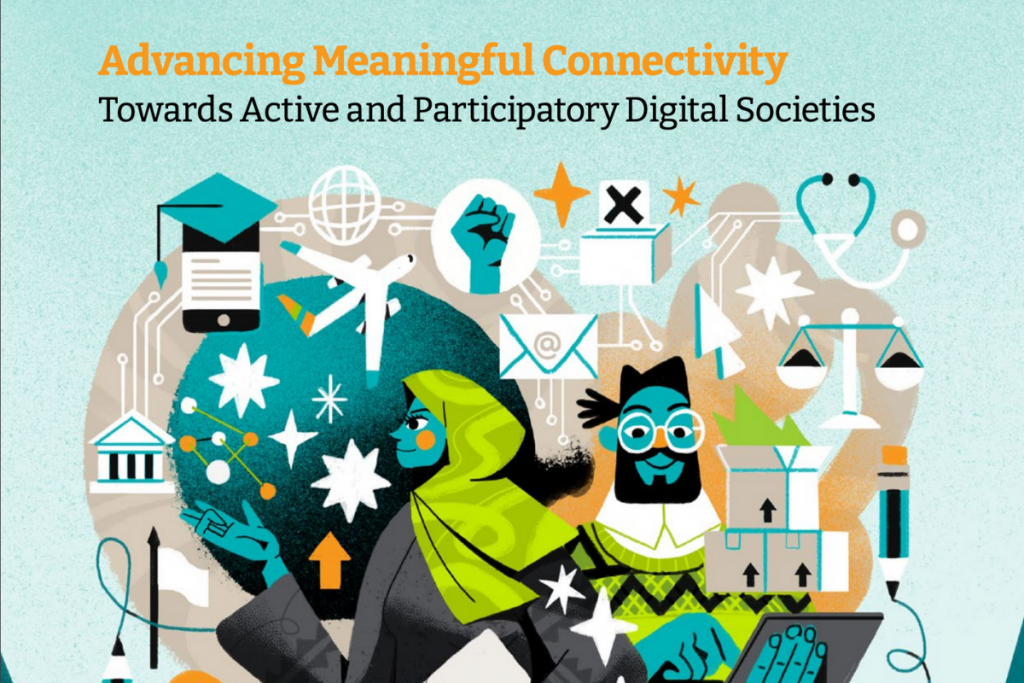Meaningful Connectivity is a framework developed by members of the GDIP team to track the components of connectivity that matter most to users and help decision-makers adopt the policies needed to connect people to an internet that is useful and empowering.
The framework focuses on four pillars: 4G-like speeds, smartphone ownership, daily use, and unlimited access at a regular location, like home, work, or a place of study.
It sets minimum thresholds across the four dimensions of internet access that matter most to users. These are:
4G-like speed
Internet speeds can make or break our online experience. We’ve all experienced the frustration of a buffering movie or an unstable video call. And without fast speeds, services like telehealth are out of the question. A 4G mobile connection is the minimum threshold for providing the speeds we need for the experience we want.
An appropriate device
To experience the full power of the internet, we need the right device for the task at hand. A smartphone provides us with the ability to create and consume content in ways that basic phones do not, as well as the portability to access the internet from anywhere. We should ideally have access to a wide range of device types.
Unlimited broadband connection
While some people have unlimited data plans, others experience severe data scarcity, which prevents them from doing certain online tasks or forces them to wait until they can connect to public Wi-Fi. An unlimited broadband connection at home, or place of work or study provides us with reliable internet access in our daily lives, allowing us to fully utilize the internet’s potential.
Daily use
We benefit most from the internet when we can use it regularly. As our societies become more digital and the internet becomes more integrated into our daily lives, connecting occasionally is not enough. Daily access to the internet is the minimum we need to see real benefits for work, education and communication.
It suggests replacing the existing top-level measure of internet use – defined as access on any device at least once in the past three months (see ITU, 2020) — as the lead indicator for connectivity within a country. Through the four, focused pillars, the framework offers guiding priorities for policymakers to focus their interventions through public investment, regulatory reform, and vision-setting to achieve universal, affordable, and meaningful internet access (see A4AI, 2021).
| ITU definition of internet use | Meaningful Connectivity | |
| Speed | No minimum speed | 4G-like speed |
| Device | Any device | Smartphone ownership |
| Data allowance | No minimum | An unlimited broadband connection |
| Frequency | At least once in the past three months | Daily use |
The framework is built around two measures: the number of people within a country with meaningful connectivity and the National Assessment for Meaningful Connectivity. It focuses on the number of people within these countries that have meaningful connectivity: that is, that have all four of the elements mentioned above. The National Assessment is a policy tool to help a country measure progress over time and brings together an average of the four pillars for a net national score.







